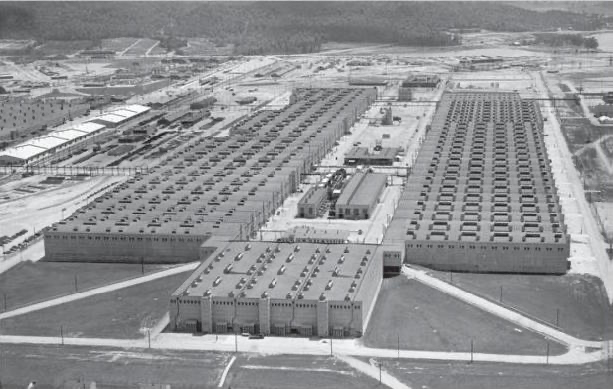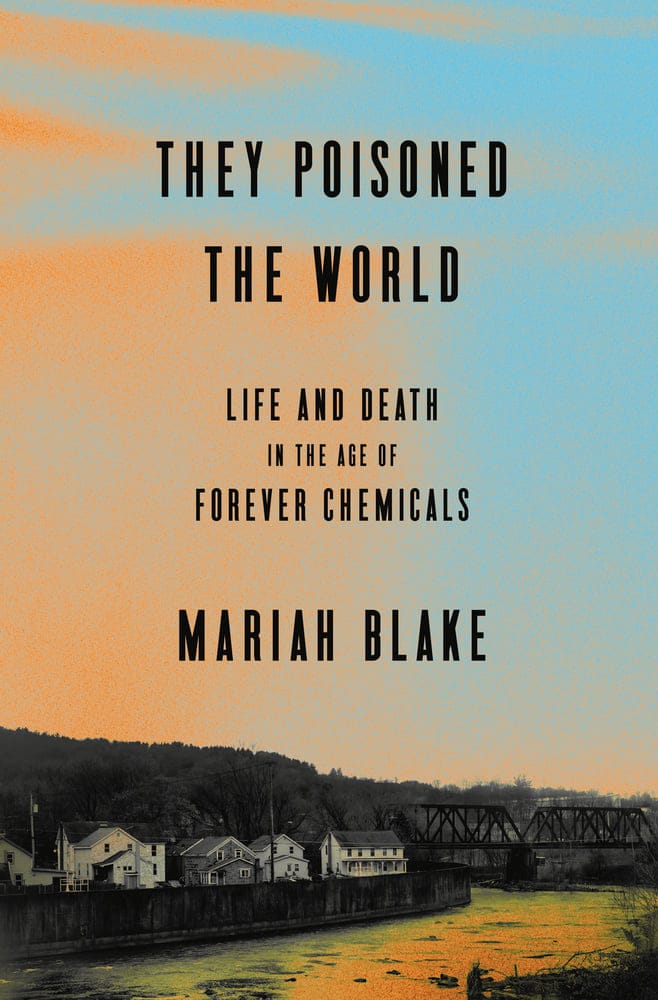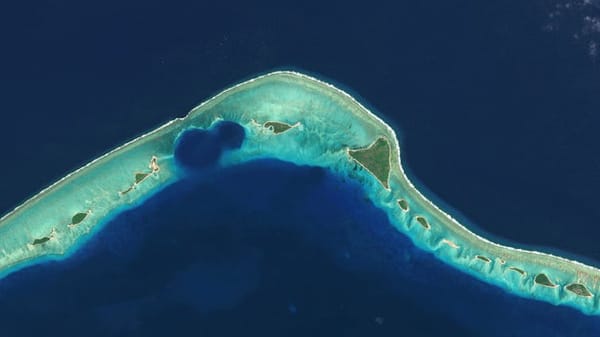Book Review: How the Manhattan Project ended up in your kitchen
For 82 years, the Manhattan Project has been poisoning our homes. A new book explores the cover-up.

Manhattan Project chemists had a problem. Separating and enriching uranium involved uranium hexafluoride and scientists needed materials resistant to this highly corrosive chemical. Unable to find one, they created their own combining carbon and fluorine, creating an incredibly strong bond in chemistry. You might even call it a “forever bond.”
Mariah Blake’s new book They Poisoned the World: Life and Death in the Age of Forever Chemicals reveals the deep and surprising connection between the Manhattan Project and the origin of PFAS (per- and polyfluoroalkyl substances), often called "forever chemicals." PFAS were critical to the Manhattan Project’s success because of their unique ability to withstand the harmful effects of uranium hexafluoride gas.
To separate and enrich uranium, scientists needed materials resistant to this highly corrosive chemical. The solution was PFAS, which combine carbon and fluorine atoms to form some of the strongest chemical bonds known, making them chemically stable and durable under extreme conditions. This made PFAS indispensable as coolants and protective coatings during the construction and operation of facilities like the Oak Ridge K-25 gaseous diffusion plant, where vast quantities of PFAS were used.

Blake’s investigative work uncovers that from very early on, Manhattan Project scientists were aware that PFAS were toxic and bioaccumulative, accumulating in human blood and causing harm to workers and nearby communities. Workers faced chemical burns and respiratory issues, while local farmers experienced severe environmental damage impacting their crops and livestock. Farmer’s in 1943 suddenly found their peaches burning up and cows unable to stand, crawling on their bellies to graze.
Despite these early warnings in the 1940s, the government and chemical companies suppressed this knowledge to protect the secrecy and interests of the nuclear program.
Blake explained the impact on nearby farmers in an interview with Democracy Now:
Now, the farmers’ complaints really alarmed Manhattan Project officials. They worried that the farmers would sue and that it would compromise the secrecy of the Manhattan Project, but also that it would open the government and its contractors up to liability. So, in 1943, they launched the secret medical research program that researched the health effects of various Manhattan Project special materials, including uranium and plutonium. In fact, as part of this program, Manhattan Project scientists injected unknowing cancer patients with plutonium. But they also researched the health and environmental effects of PFAS.
And Manhattan Project scientists had determined, as early as 1947, that these chemicals were highly toxic and that they were accumulating in human blood. So, one of the things that makes these chemicals so harmful is that they build up in human blood, and they stay there for a long time. Now, this program continued after the war under the auspices of the Atomic Energy Commission, and by 1970, scientists within this program had determined that PFAS were accumulating in the blood of people all over this country.
After World War II, companies like 3M and DuPont acquired licenses and patents to manufacture PFAS commercially. They hired former Manhattan Project chemists to develop these substances into consumer products. By 1951, 3M was refining a type of PFAS called perfluorooctane sulfonic acid (PFOS) that DuPont subsequently turned into consumer products launching an era where PFAS became ubiquitous. Soon they were found in thousands of everyday items including Teflon cookware, Scotchgard fabrics, and Gore-Tex gear. They were also used in the Apollo space program, coating on catheters and seals on vents.
The widespread use and persistence of PFAS chemicals have since created a global environmental and health crisis, all stemming from their secretive and strategic inception in nuclear weapons development.
They Poisoned the World offers a crucial exposé connecting the dots from the birth of PFAS in the shadows of the Manhattan Project to their ubiquitous presence today — revealing not only a dangerous chemical legacy but also corporate and governmental cover-ups that allowed these harmful substances to proliferate while keeping the truth hidden for decades. In fact, Blake makes a strong case in the book that companies like DuPont and 3M, along with the government, created the playbook of denial that other harmful industries like Big Tobacco and Big Oil would follow years later.
These chemicals are so prevalent that the circle has been complete: the fish you cook in your teflon pan is poisoned by the PFAS that have seeped into our ponds, lakes and streams. A 2023 Environmental Working Group study found that eating a single freshwater fish a year equals a months-worth of drinking water laced with high concentrations of forever chemicals.
Blake’s work is a reminder that the impacts of the atomic age extend far beyond radiation, encompassing the “forever chemicals” born alongside the Manhattan Project. Past proponents of PFAS called the 20th Century the “Chemical Century,” not as a warning, but as a celebration of scientific advances that would improve life. Blake crucial work shows how wrong they were and reveals the myriad ways that the bomb poisoned the world.
(Nuclear Times earns a small portion of sales through affiliate links.)





